Journal
The beauty of composition.
Beyond an art, blending as practised by Haut-Bailly is the temporal interpretation of a timeless style.
To blend is to know how to identify and then match elective affinities, in the sense that in chemistry we speak of the disposition that substances have to unite together. Or in music, the assembly of instruments, and in painting, the assembly of colours to produce a particular harmony.
Here and now, at the summit of this legendary croup of Château Haut-Bailly, the different parcels and grape varieties, in all their diversity, must be thought of as the instruments of an orchestra.
Separately, and ultimately articulated, under the inspiration of an inhabited conductor, these instruments will produce a work whose genius is the fruit not of a simple addition, but of an authentic multiplication of distinct and complementary properties.
The value created is much more than the simple sum of the elements that make up the vintage, it is the transcendence of the terroir expressed, sublimated and magnified by the choices of blending that are thoughtful, slowly matured and carefully weighed.
Behind these enlightened choices is the hand of man, or woman – both at Haut-Bailly: Véronique Sanders, President, and Gabriel Vialard, Technical Director, with the support of the teams and expert advisors.
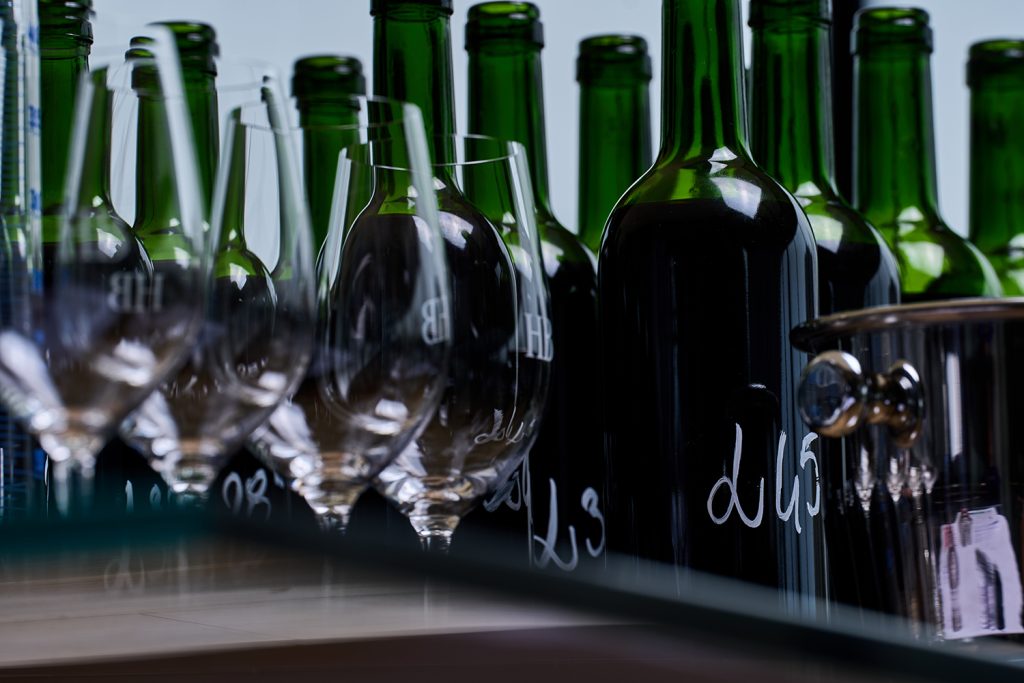
For those who are familiar with the place, while the life of the vineyard is dotted with numerous rituals throughout the seasons, the time of blending has a particular significance. It can be seen as a liturgy, in the sense of a ritual of ceremonies and incantations that make up the cult of a divinity – in this case a Dionysian divinity.
When this liturgical time comes, the joie de vivre that still reigns on the estate certainly doesn’t disappear, but it is more restrained, contained, more discreet, a bit like lowering one’s voice when entering a church. In fact, it’s time for meditation, and a form of inspired gravity, in the heart of the cellar that has become a temple, when the team in charge gathers around an immemorial ritual imbued with as much science, knowledge, rigour and wisdom as it is with mystery – not to say alchemy…
The fruit of every creation is called a creature, and so it is with every new blended vintage.
Isn’t every assemblage, in essence, a work of creation?
But how can you produce something new and unique from pre-existing data?
Here we come to the equation that has been unique to Haut-Bailly for centuries.
On the one hand, the particular personality of a given vintage, by its very nature specific.
On the other, the Haut-Bailly identity, which has always been eminently recognisable, transcending and subsuming the contingencies of time.
At Haut-Bailly, this very special point where timeless identity and temporal personality meet, and merge indistinctly, is called ipséité, or authentic and perfect self-expression.
This is the hallmark of the estate, and its unaltered nobility, when so many others shape their wine, changing with the times…
So, let’s go back to where creation takes place.
Around the tasting table in the cellar, covered with test tubes, decanters, bottles and glasses, in the daylight that pours in through the large bay window, facing the towering silhouette of the château, in religious silence, all five senses are alert.
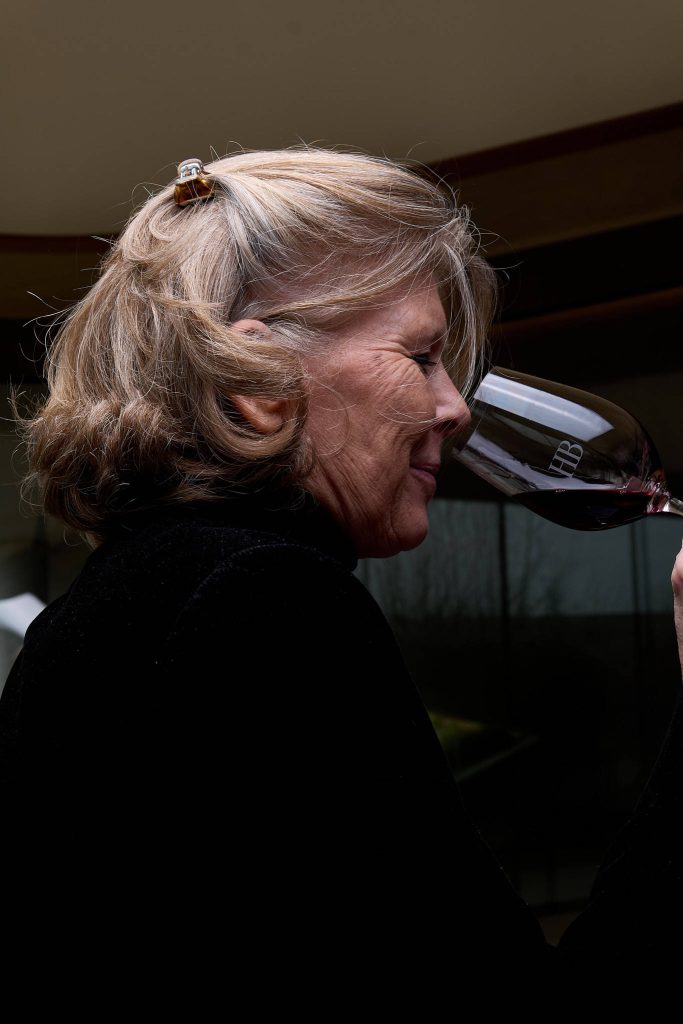
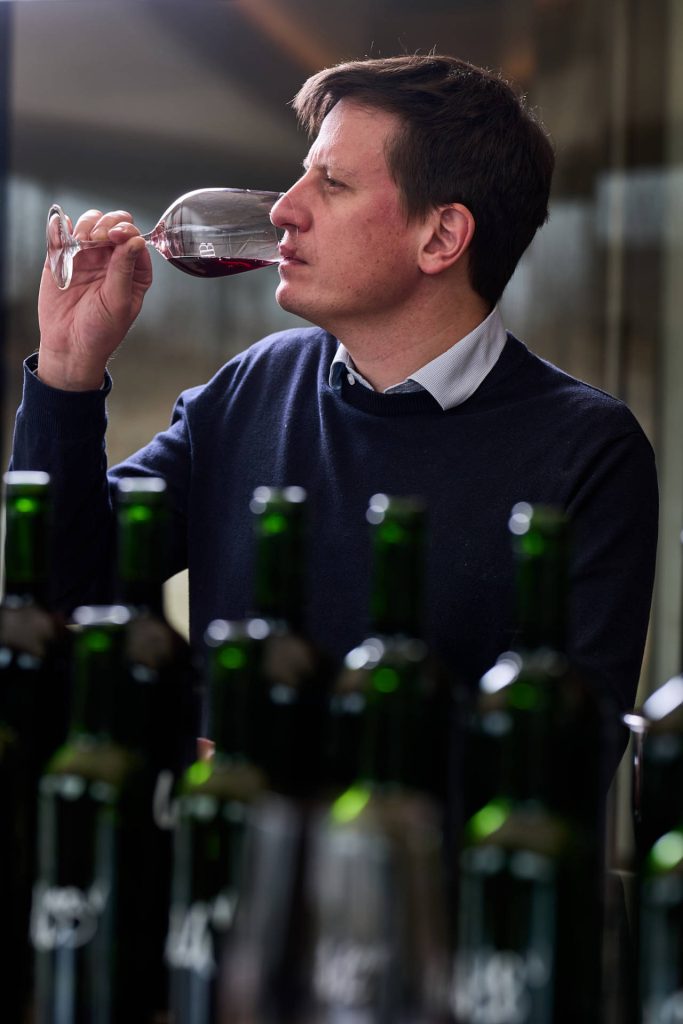
The colour ?
It’s a signal, and a sign.
Firstly, because its purity and clarity are essential – nothing should disturb it.
It’s also a sign, because it influences our judgement: the density and intensity of the colour are scrutinised.
The darker, deeper and more intense the colour, the better the vintage. Once the final blend has been made, the vintage will reflect the colour palette of the grape varieties that form its composition, a subtle alliance of the red of Merlot, the black of Cabernet-Sauvignon, the violet of Petit-Verdot…
While there may be fine nuances in this palette, the fact remains that the final colour will always be that distinctive, exclusive, recognisable colour of Haut-Bailly.
The nose ?
It, too, is first and foremost a signal: a real olfactory watchdog, it rejects any batch that is not perfectly ripe.
To make a great wine, not just a good wine, the requirements are non-negotiable: what is just enough is never enough.
A maxim at Haut-Bailly: the nose discards, the palate chooses, the taste refines.
Secondly, the nose is a beacon, shining a light on the taster in an ocean of aromas: you need an extreme degree of skill to understand the hundreds of molecules that can be released – up to three thousand!
Beyond that, the nose plays an essential role throughout the process, in successive levels of refinement.
The palate ?
It orders: the categorisation of batches enables a very precise inventory to be made of possible and future combinations.
It combines: the final result must be superior to what each individual element can contribute – as we said earlier, successful addition is multiplication.
It anticipates: how will this or that promising lot evolve in ten, thirty or fifty years’ time? As Denis Dubourdieu so aptly put it, Great Wines “only acquire their true personality as they age: a Great Wine, like a person who ages well, always seems reasonably younger than their age, but above all it always proves to be more interesting, more complex, more moving as the years go by”.
The “touch” ?
Many tasters and lovers of the estate’s wines celebrate the silkiness of its tannins, so soft on the palate and caressing like cashmere. A “tactile” wine, as Michel Bettane once said, a velvety wine full of suppleness, delicacy and elegance: “At Haut-Bailly, it’s the tactile sensations that are always superior. Silkiness and depth.
The sound ?
Can you hear Haut-Bailly? Yes, during fermentations – the slight sound of fine bubbles bursting on the surface of the liquid. It’s an airy rustle that soon stops, and the wine is said to be at rest. It’s as if the wine has calmed down, inviting you to meditate, to reflect on what has been achieved. Ready for blending.
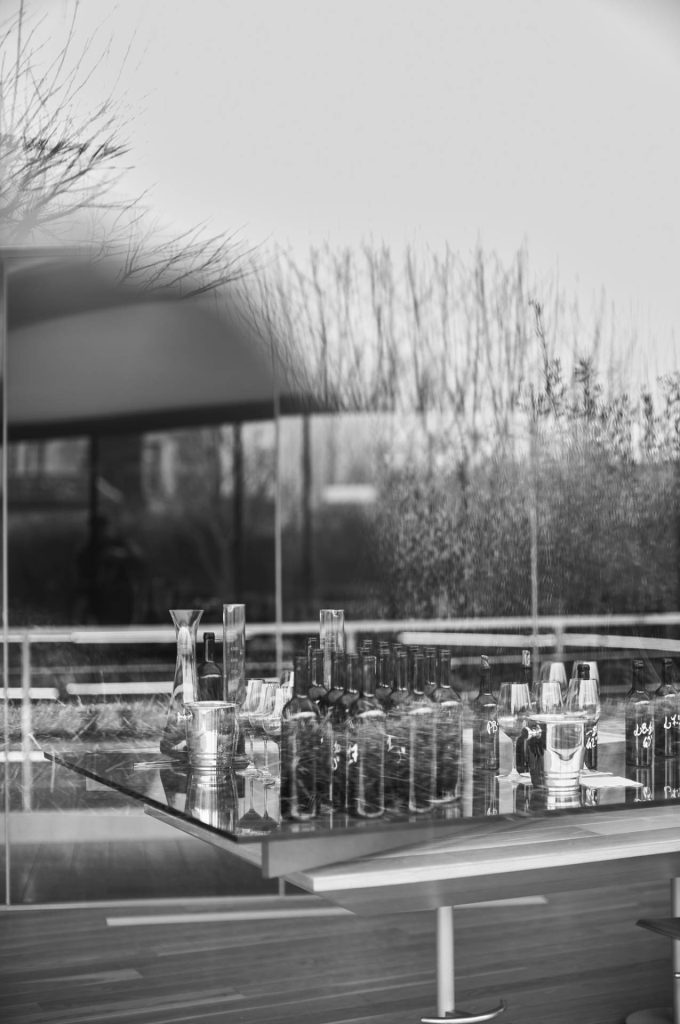
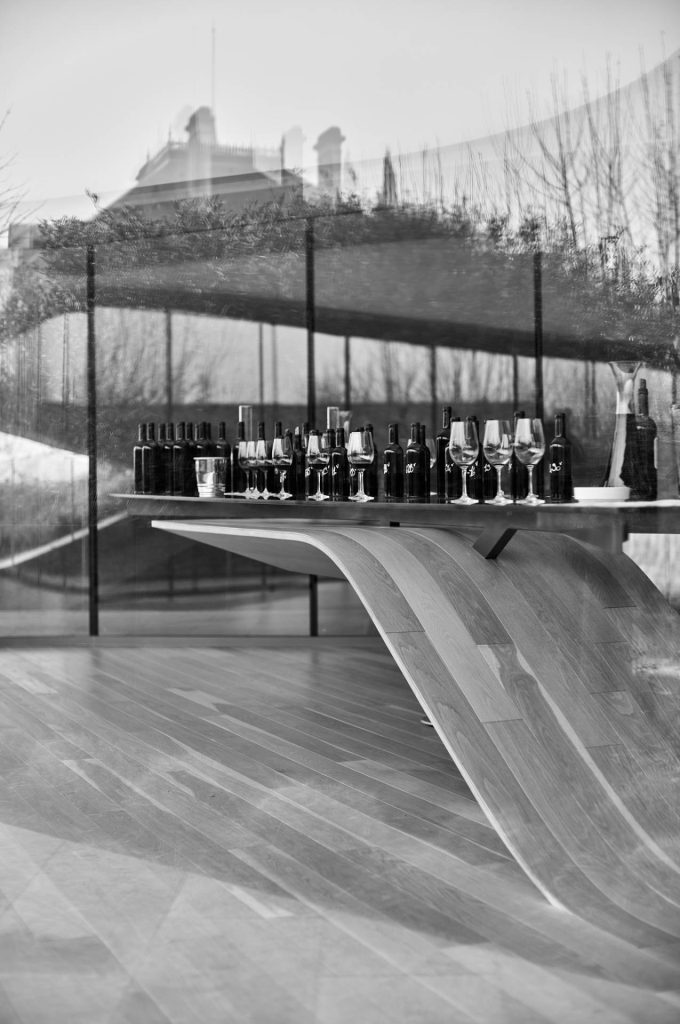
And what about the intellect? The final, reasoned choice of the winemaker? Because no, a great wine does not come together on its own, by chance or miracle; it is man who puts it together. It is the human factor, and the human factor alone, that makes sense of what the five senses have perceived and retained, analytically and synthetically.
Analytically speaking, we are primarily concerned with the empirical, the felt, with a central objective: to protect the spirit of the place, to preserve the Haut-Bailly style beyond the variety of batches at our disposal, to find the ‘la’ of the vintage by erasing non-essential variables to embody and sublimate the essence of the estate.
Synthetically speaking, with all the data collected in terms of colour, aromas, body and tannins in hand, we don’t reason in percentages, we resonate in emotions, always with the elegance of Haut-Bailly wines in mind.
This is the time for composition, in the musical sense of the term, as mentioned in the introduction: how can we turn a set of sublime notes into a timeless harmony, faithful to the terroir and magnifying it, tomorrow and a hundred years from now? The key word is refinement, which leads to the desired level of refinement, starting from the heart of the ideal blend, through successive touches and retouches.
At the end of this patient, attentive, intense and decisive work of composition, there is grace, the perfect harmony of the wine, the fruit of depth and lightness: airy, and better still ‘ethereal’, of infinite purity, according to the dazzled word with which Robert Parker characterised the 2010 vintage.
Seated on its magical hillock, reaching towards the purity of the sky, this is where Haut-Bailly blossoms.

